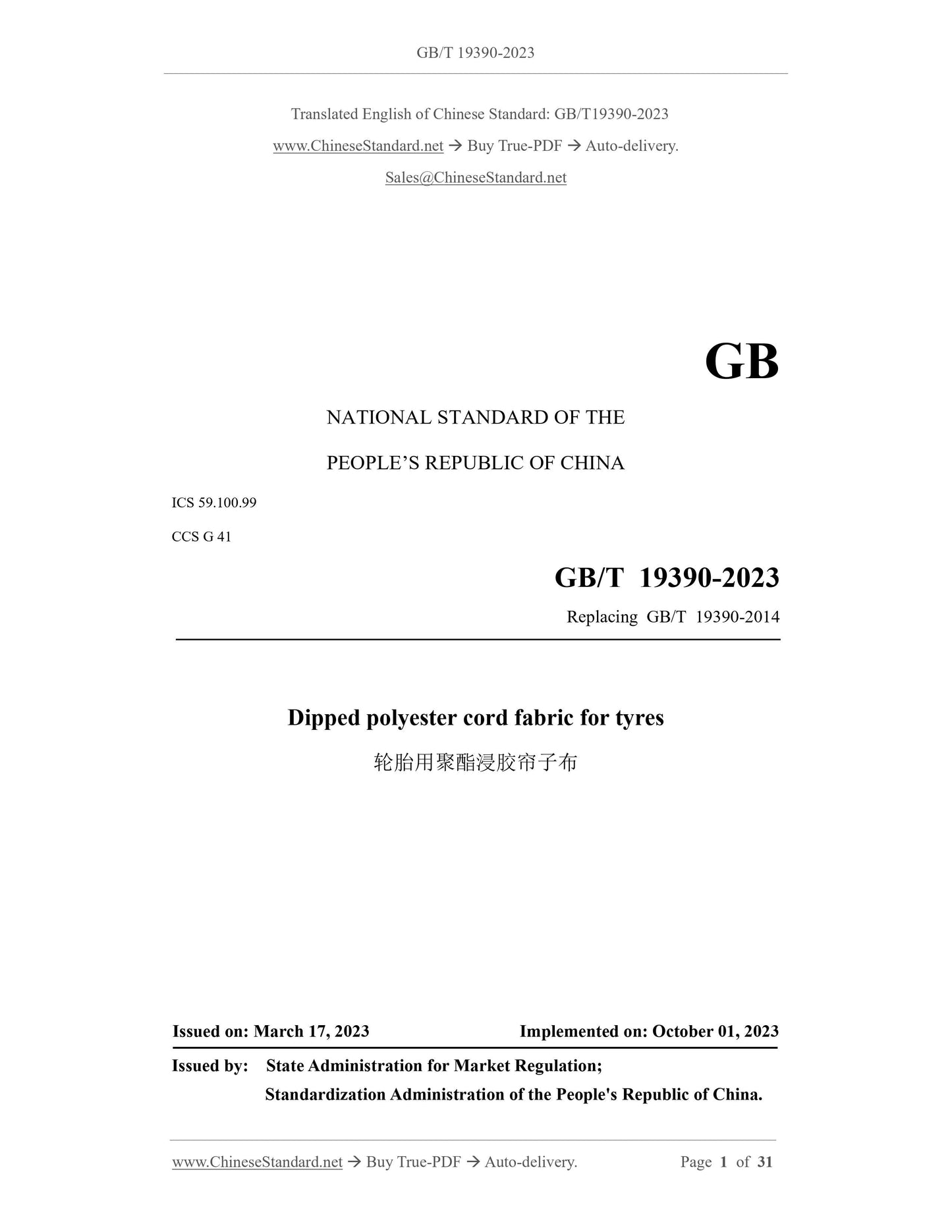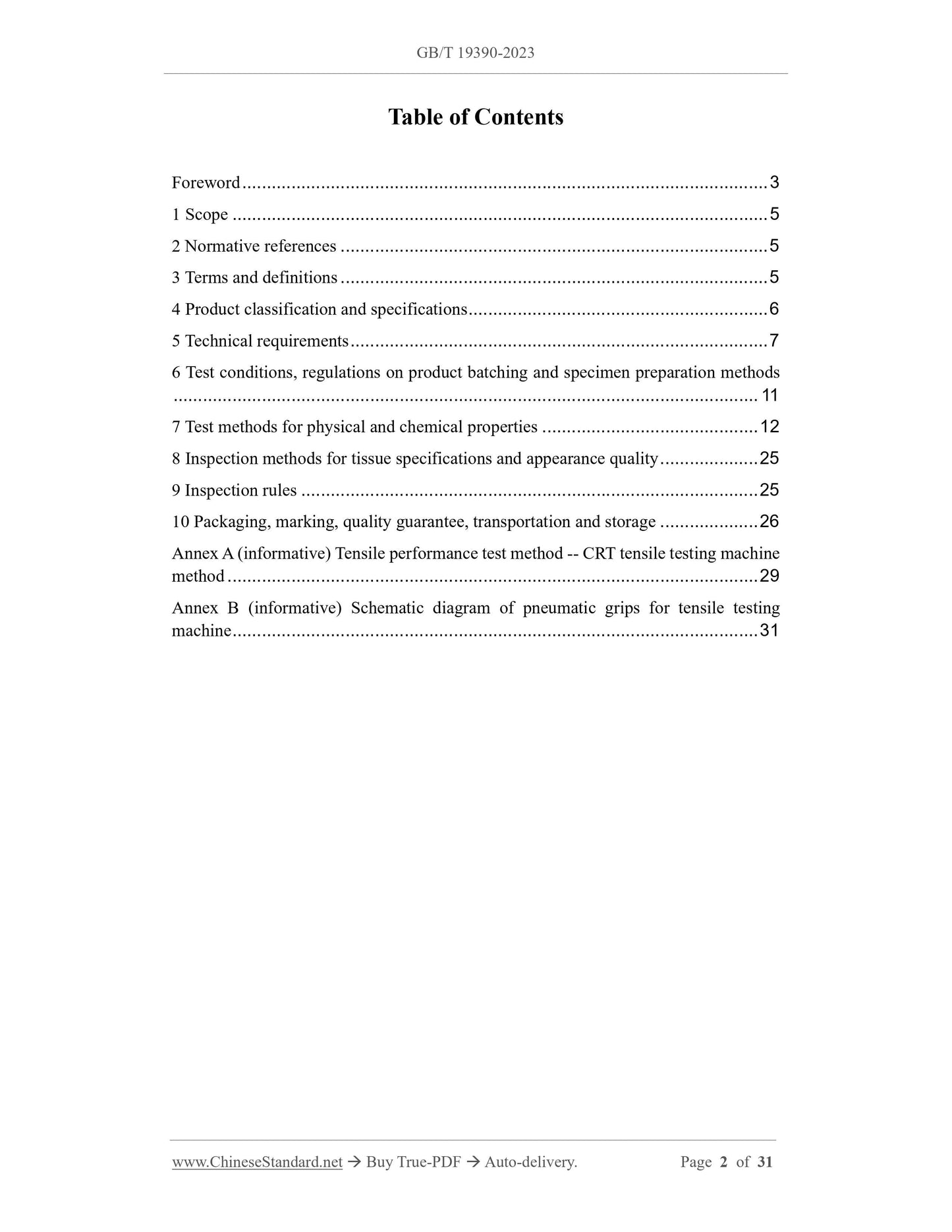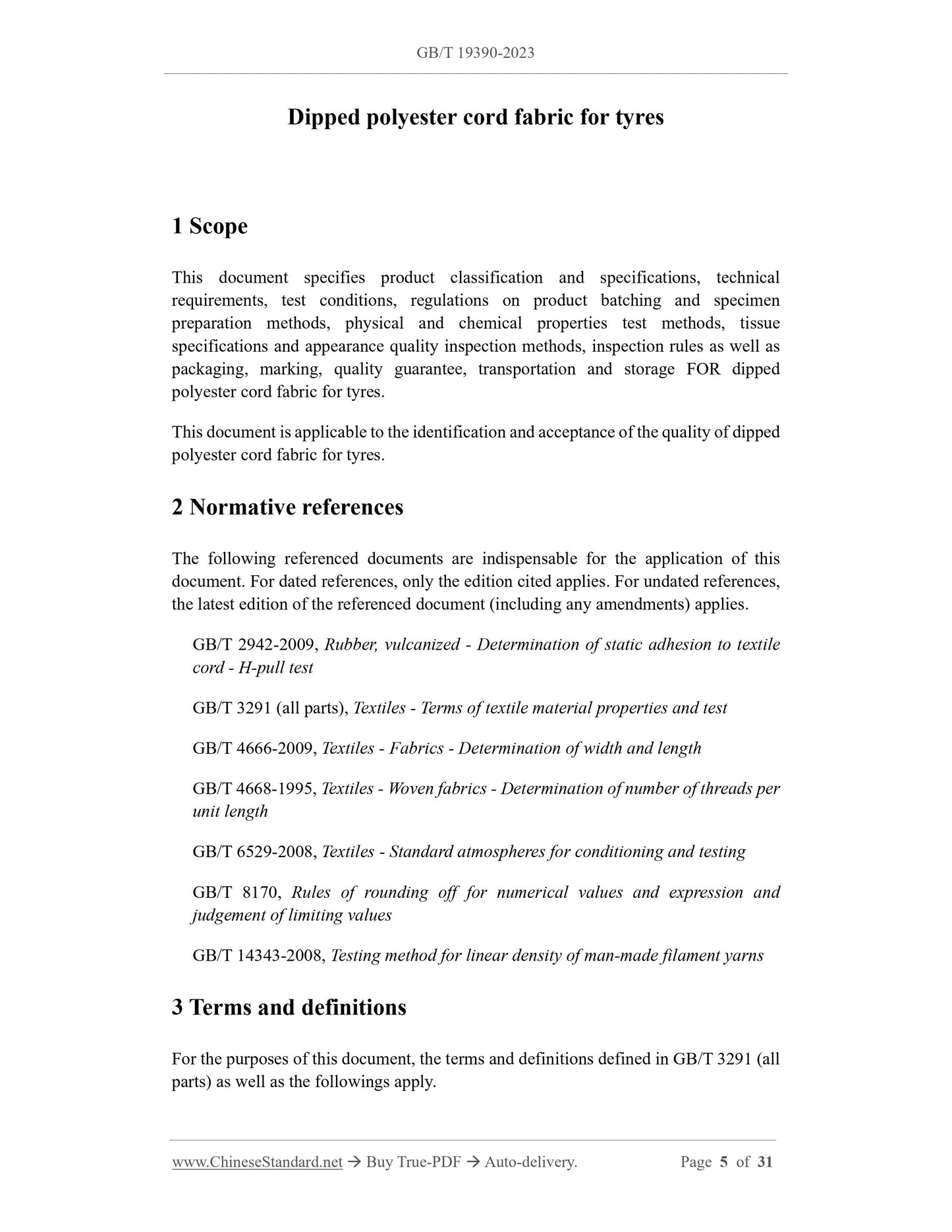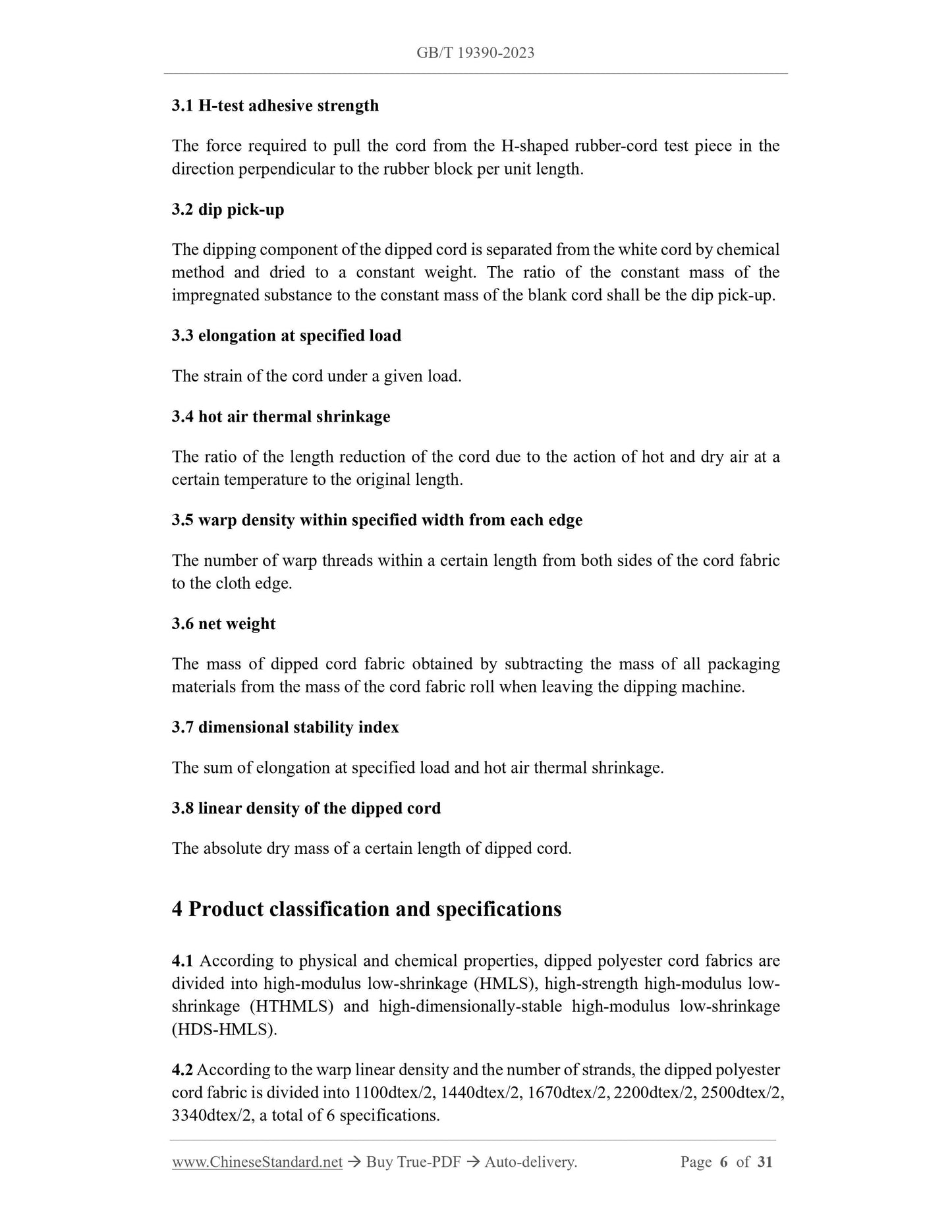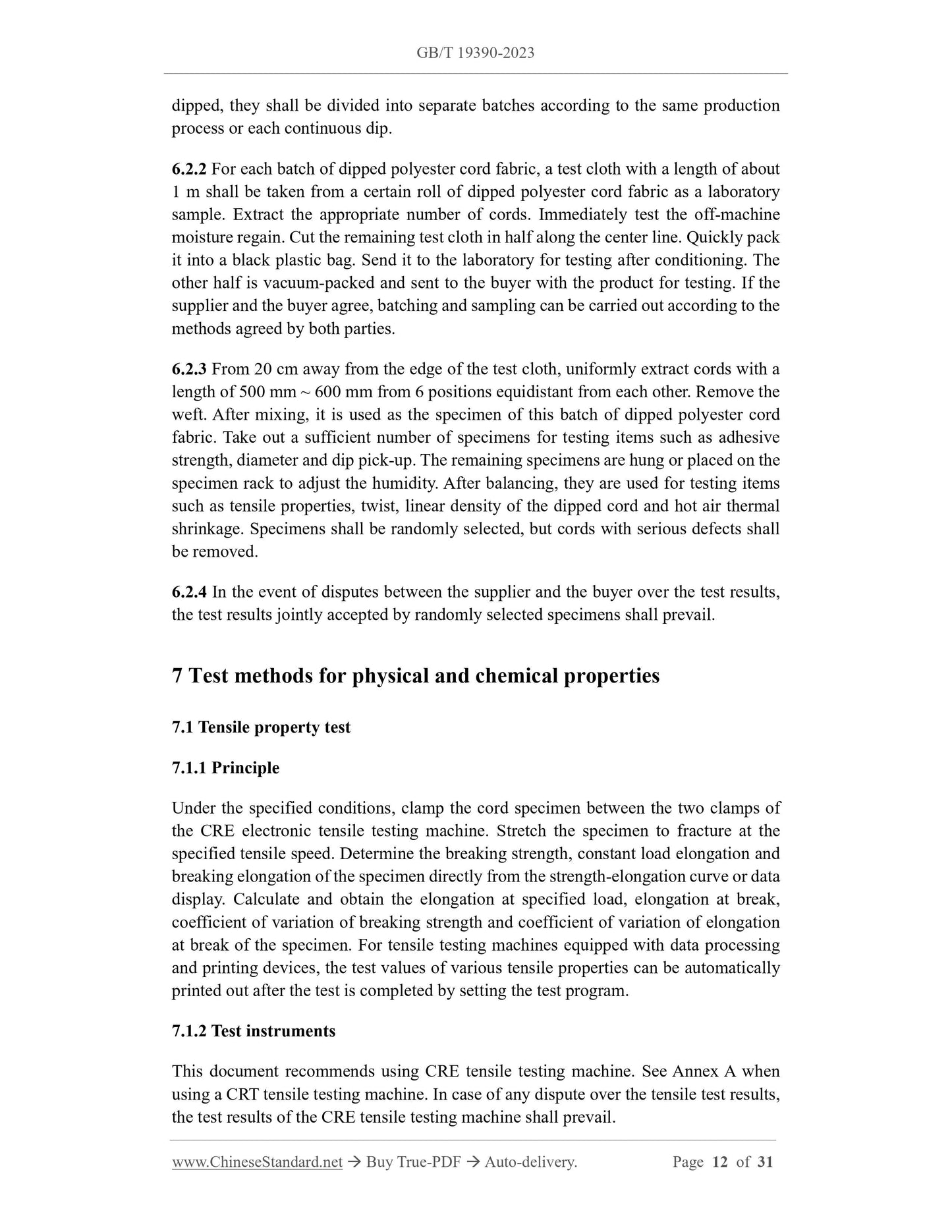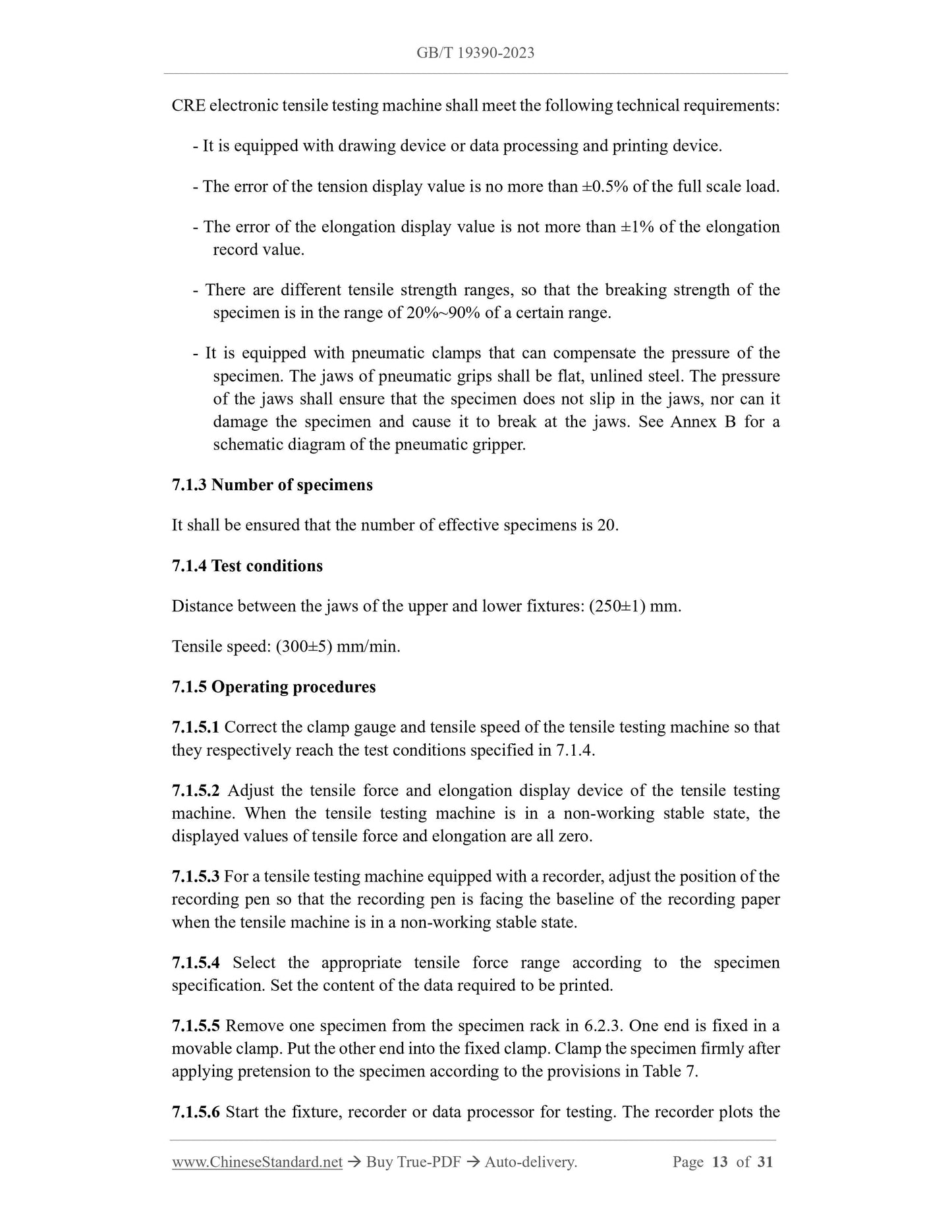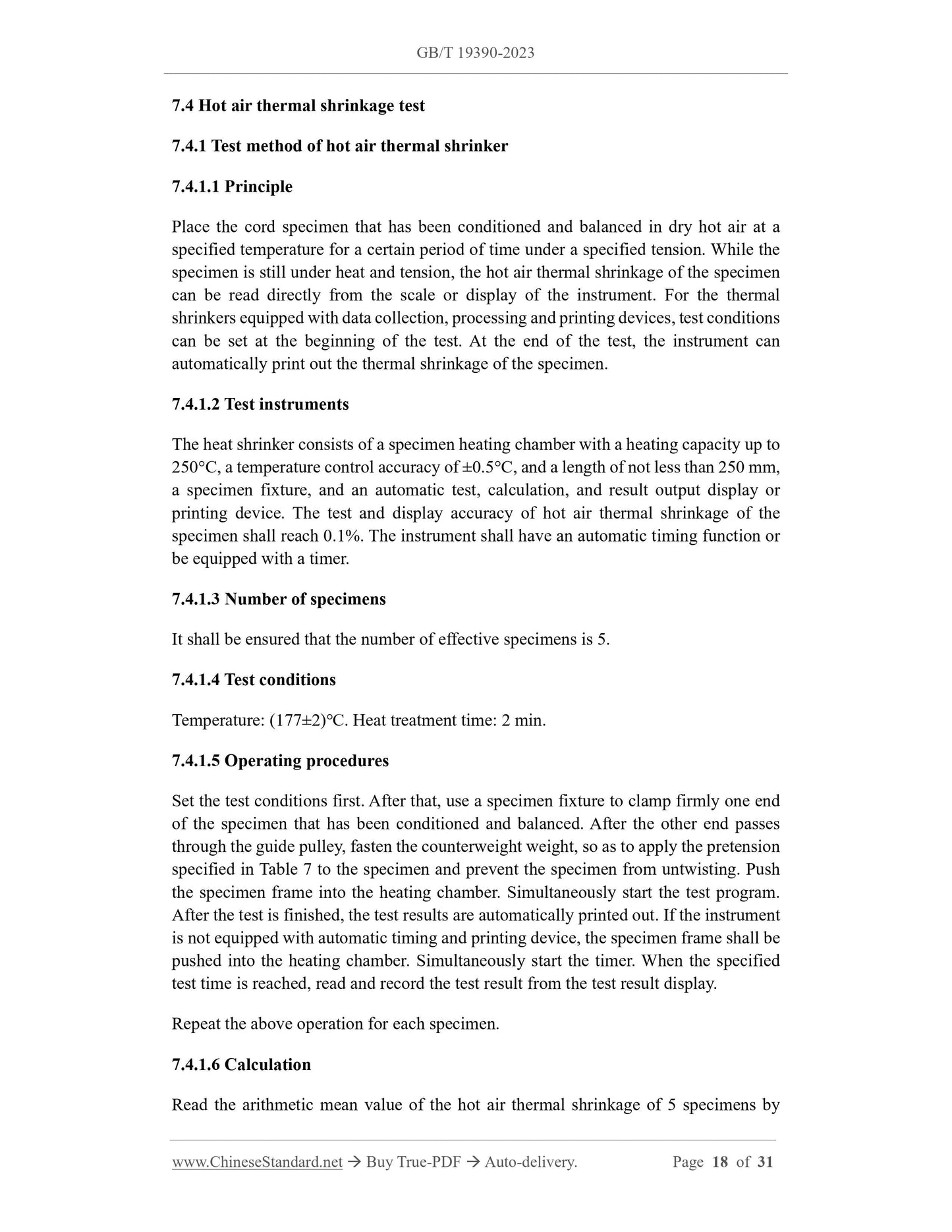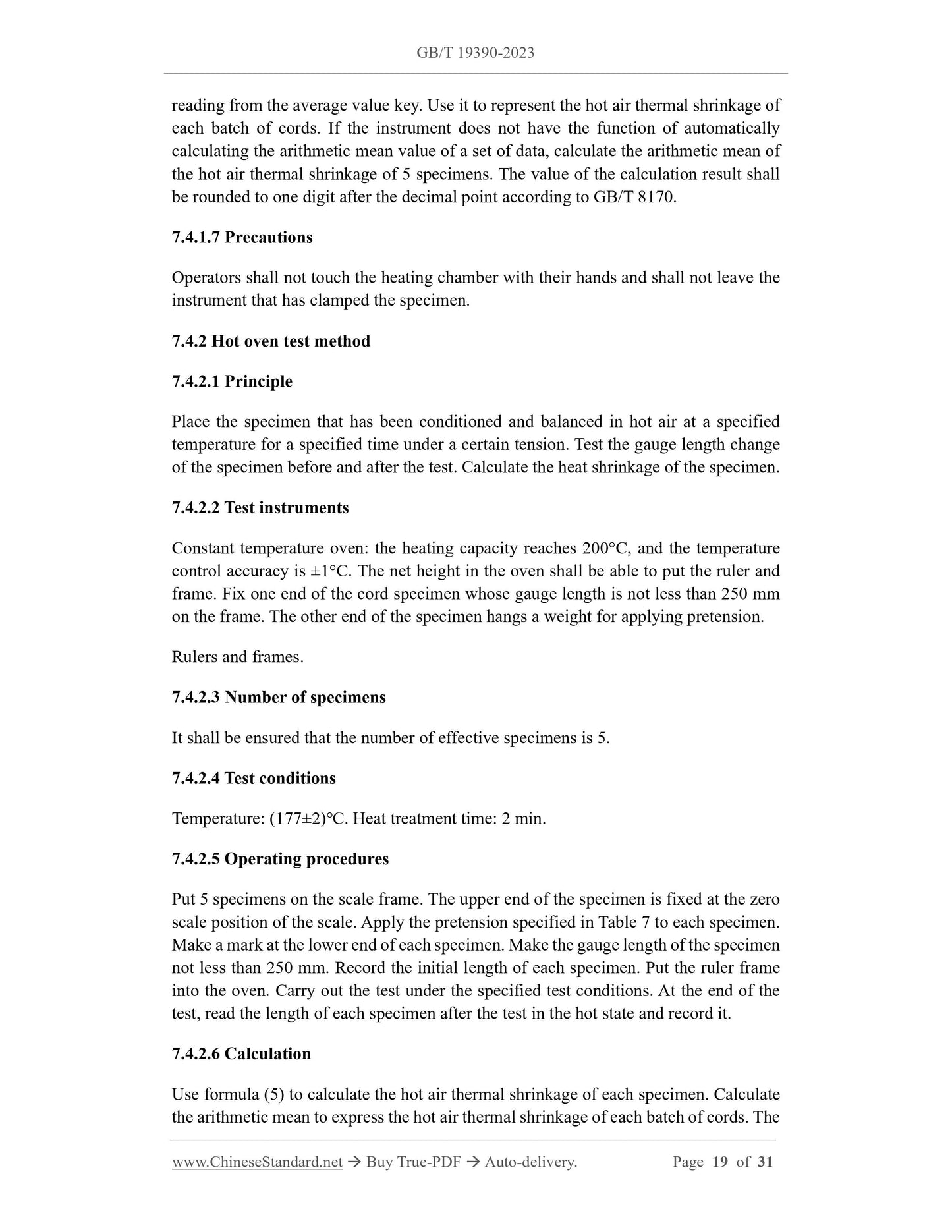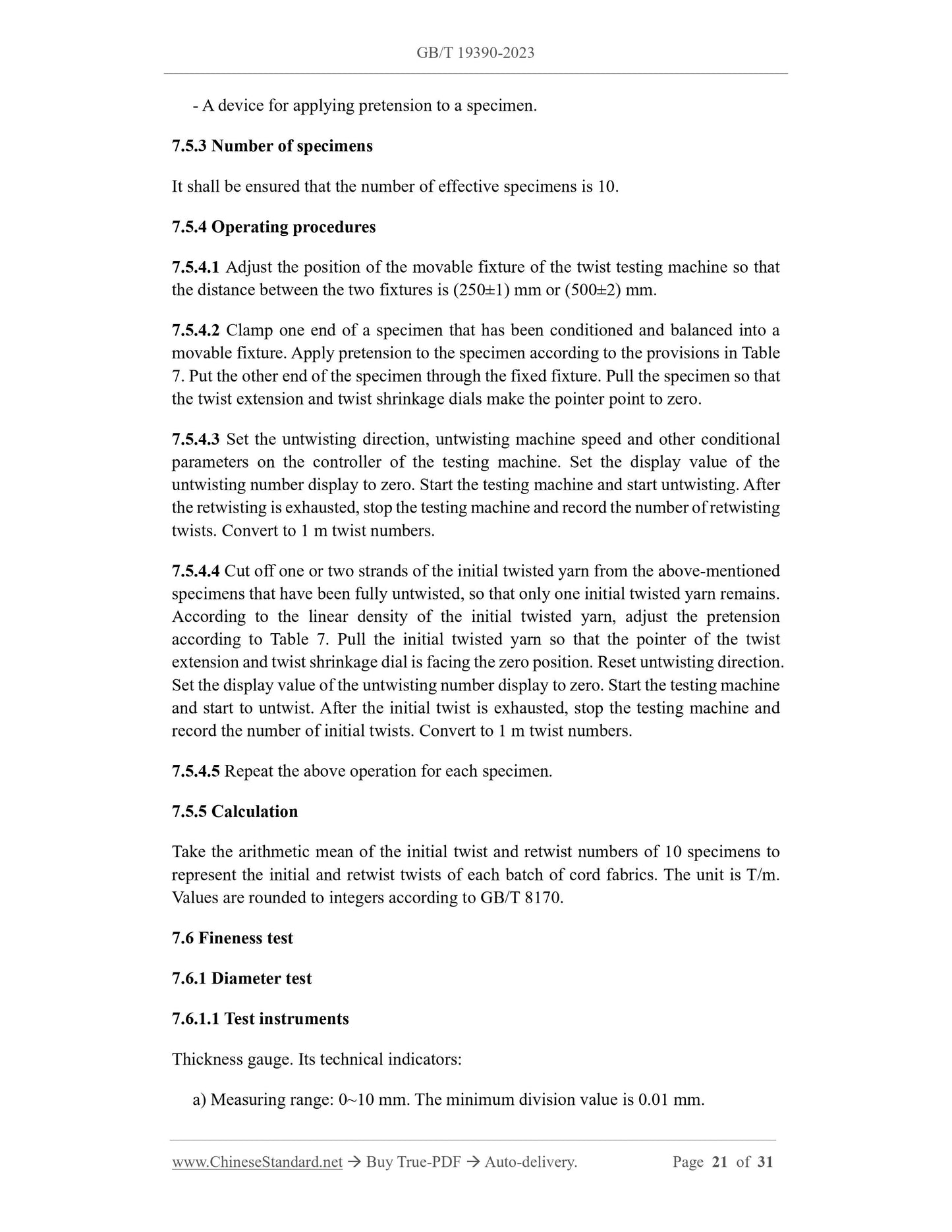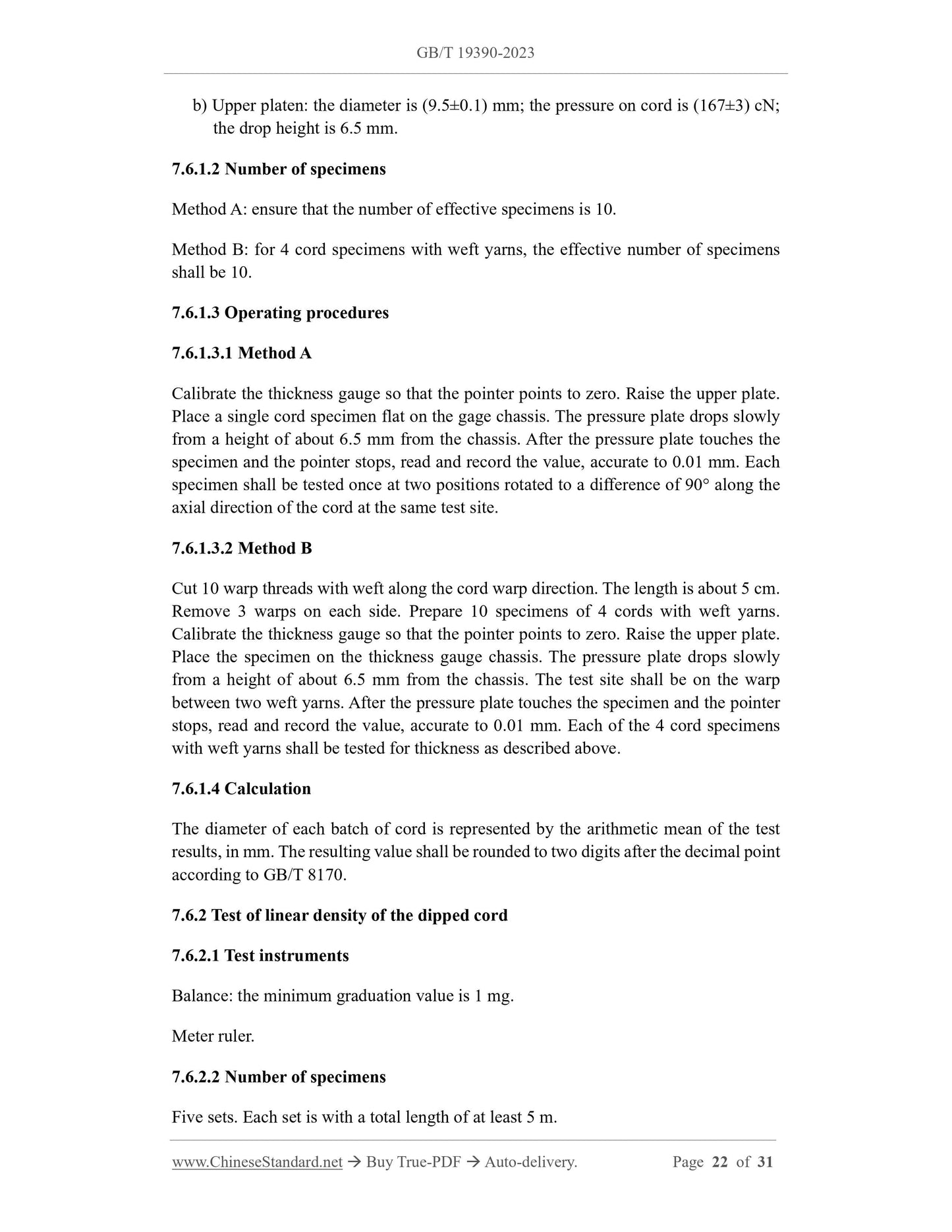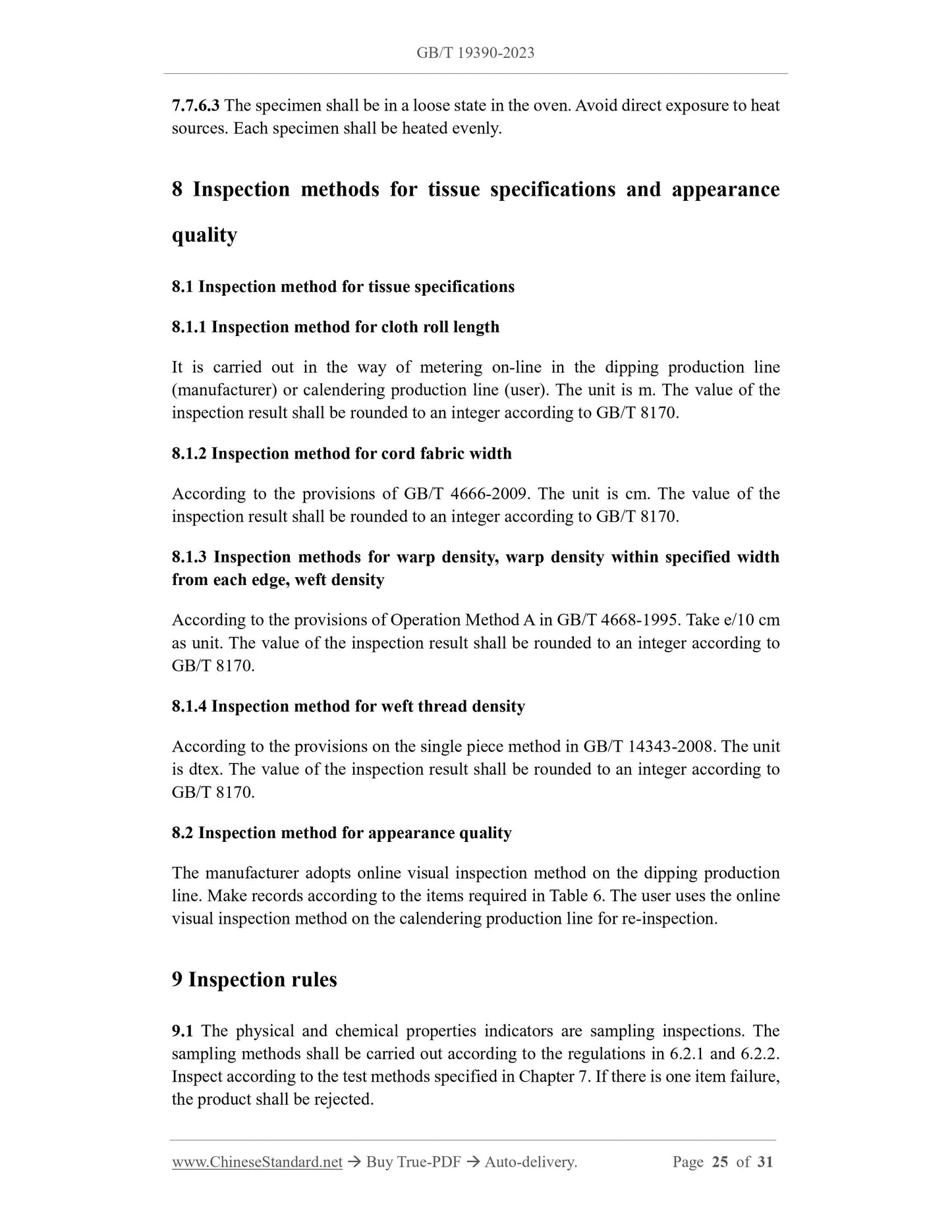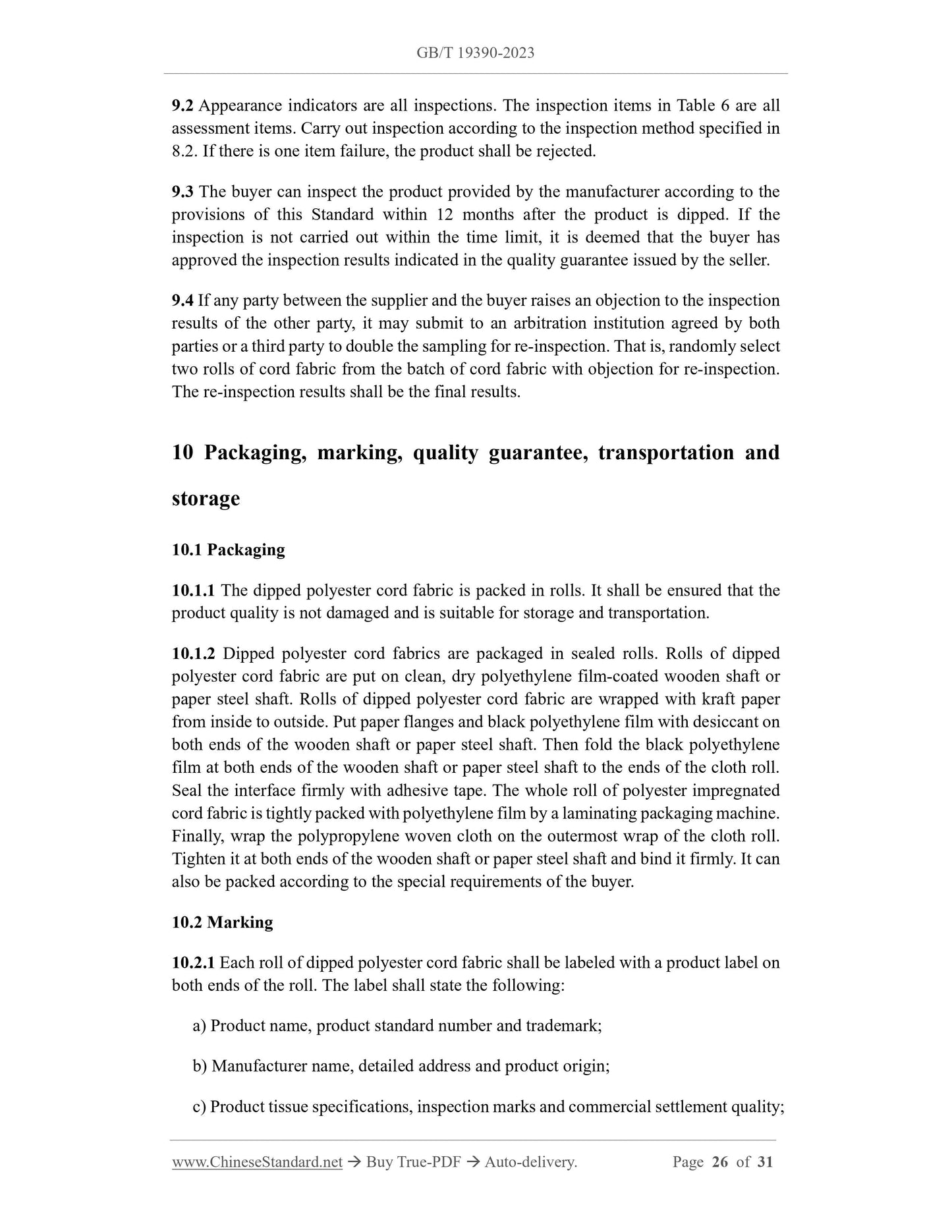1
/
of
12
www.ChineseStandard.us -- Field Test Asia Pte. Ltd.
GB/T 19390-2023 English PDF (GB/T19390-2023)
GB/T 19390-2023 English PDF (GB/T19390-2023)
Regular price
$350.00
Regular price
Sale price
$350.00
Unit price
/
per
Shipping calculated at checkout.
Couldn't load pickup availability
GB/T 19390-2023: Dipped polyester cord fabric for tyres
Delivery: 9 seconds. Download (and Email) true-PDF + Invoice.Get Quotation: Click GB/T 19390-2023 (Self-service in 1-minute)
Newer / historical versions: GB/T 19390-2023
Preview True-PDF
Scope
This document specifies product classification and specifications, technicalrequirements, test conditions, regulations on product batching and specimen
preparation methods, physical and chemical properties test methods, tissue
specifications and appearance quality inspection methods, inspection rules as well as
packaging, marking, quality guarantee, transportation and storage FOR dipped
polyester cord fabric for tyres.
This document is applicable to the identification and acceptance of the quality of dipped
polyester cord fabric for tyres.
Basic Data
| Standard ID | GB/T 19390-2023 (GB/T19390-2023) |
| Description (Translated English) | Dipped polyester cord fabric for tyres |
| Sector / Industry | National Standard (Recommended) |
| Classification of Chinese Standard | G41 |
| Classification of International Standard | 59.100.99 |
| Word Count Estimation | 21,277 |
| Date of Issue | 2023-03-17 |
| Date of Implementation | 2023-10-01 |
| Older Standard (superseded by this standard) | GB/T 19390-2014 |
| Issuing agency(ies) | State Administration for Market Regulation, China National Standardization Administration |
Share
